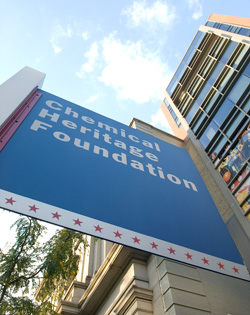 Miriam Schaefer hated Chemistry–she remembers getting a D in the subject in grade school. That’s somewhat surprising, considering her parents and grandparents were all doctors. Even more surprising is she’s served the last seven years as CFO of the Chemical Heritage Foundation, a non-profit based in Philadelphia that raises awareness worldwide for chemistry.
Miriam Schaefer hated Chemistry–she remembers getting a D in the subject in grade school. That’s somewhat surprising, considering her parents and grandparents were all doctors. Even more surprising is she’s served the last seven years as CFO of the Chemical Heritage Foundation, a non-profit based in Philadelphia that raises awareness worldwide for chemistry.
Schaefer, however, was the perfect choice for project manager for CHF’s museum, which opened to much fanfare last November. The museum’s permanent exhibit, Making Modernity, was created with people like Schaefer in mind.
“If I could like it, anyone could,” says Schaefer, who has become quite an expert on chemistry’s history and role in the development of society since that poor grade. “What we’re trying to get is the 99 percent of us who aren’t going to be scientists to appreciate it.
“We dont have to understand the science, but we do need to understand how it effects you.”
Schaefer points to computers, gasoline, clothes, and food as everyday examples of chemistry’s impact through the years. The museum, which spans two floors and connects to a new conference center, does an admirable job of presenting what’s interesting about chemistry in a variety of ways: a 17th-century Flemish painting of alchemy; a piece of Bakelite, the first synthetic plastic; the first bra made from nylon; and the piece of notebook paper from 1971 on which Paul Lauterbur wrote his idea that led to the development of the MRI.
A recent addition is a polyester wedding dress converted from an unused World War II parachute. Patricia Smith sewed the dress during the difficult economic period immediately following the war for her 1947 wedding.
“We sell perspective,” Schaefer says.
Source: Miriam Schaefer, Chemical Heritage Foundation
Writer: Joe Petrucci